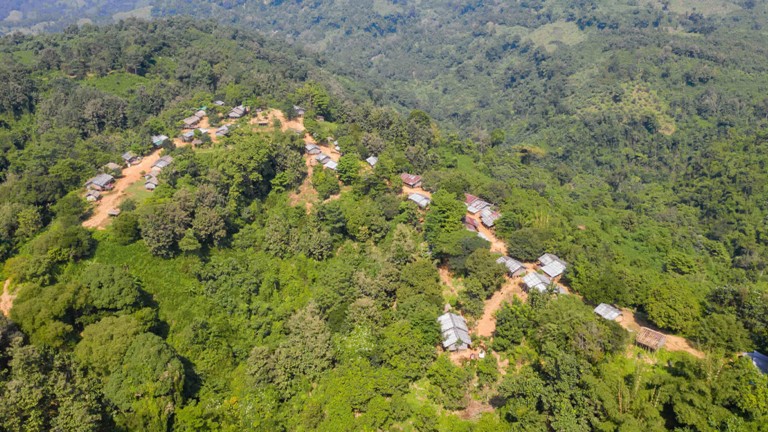
Saving the Chattogram Hill Tracts is a national responsibility
A K M Azad Rahman and Meer Ahsan Habib
Published:29 Jan 2022, 11:08 AM

Saving the Chattogram Hill Tracts is a national responsibility
Hills, lakes, food, ethnic diversity, and natural beauty are some of the first things that come to our mind when we think about our hilly regions, particularly in the south-east part of the country, known as the Chittagong Hill Tracts (CHT). A region that is home to major indigenous peoples. A region that has consolidated peace after several decades of arms conflicts. However, new challenges have emerged; the region is under severe stress due to climate change, in addition to the existing socio-economic challenges.
The CHT remains among the most sought-after tourist attractions in the country. But very few people can feel the pain of hill dwellers, and how they are counting to an uncertain time where this spectacular natural environment will no longer entertain tourists. Impacts of climate change and human-induced activities like deforestation and increased use of hilly lands are threatening the CHT hill ecosystem and affecting the livelihoods of the people.
It is pertinent to mention that Bangladesh is ranked seventh among the climate-vulnerable countries globally. On the other hand, 10 districts of Bangladesh have been identified as hotspots for climate change, and all three districts of CHT, namely Bandarban, Rangamati, and Khagrachari, have been ranked second, fourth, and seventh respectively among them (World Bank, 2018). Even with the higher vulnerability rate, the region has failed to get proper national attention as a climate-vulnerable region.
The CHT possesses unique characteristics and ecology as it is covered by the largest portion of forest (43%) in Bangladesh. The mountainous, rugged terrain with deep forests and lakes gives it a divergent character compared to the rest of the country. The majority of its population lives on agriculture. Although horticulture is the major source of livelihood, it has emerged as a threat to forest conservation efforts, creating a hard choice between livelihoods and conserving the natural ecosystem.
The Village Common Forest (VCF) is a traditional practice to conserve community land for ecosystem services. The government needs to recognize this and scale it up, and definitely stop land degradation and deforestation by 2030 in line with Glasgow Leaders’ Declaration on Forests and Land Use.
A long debate on jhum cultivation, whether it is destructive to the natural ecosystem or not, persists, but jhum cultivation is a traditional practice that developed with no-tillage concept, and is primarily eco-friendly if its natural cycle (12-15 years) is maintained. More forests are now being converted to agricultural lands, however, making the Jhumias in the region the most vulnerable community in CHT. A special program, therefore, needs to be designed to incorporate them in the extended social safety net programs and enhance new skills to help them transition to non-agricultural livelihoods.
The increased frequency of hot days, flash floods, cyclones, landslides, and erratic rainfall are common hazards affecting the livelihood of the marginalized people. The low yield from jhum and other means of agricultural harvest is forcing farmers to rely more on chemical fertilizers and pesticides.
Although chemical fertilizers ensure a high yield compared to organic ones, it is having quite a negative impact on the hill ecosystem. Getting a justified market price of the yield is also a major concern. Therefore, the region should be developed as an organic zone with proper financial and technical support, as well as positive branding.
Another underlying problem of the CHT is that the tourism sector developed discreetly, where community engagement and shares are minimal. A group of people controls the whole sector, caring little about conserving the hill ecosystem. Tourists, on the other hand, are also polluting the environment. Community-led eco-tourism should eventually improve the livelihood of the people but more needs to be done.
As the streams in the region are dying gradually, scarcity of water is a major threat to the people. The crisis is forcing them to move from one place to another where water is available. There are high chances that it will bring new conflict and affect social cohesion.
Nature-based solutions are the key for conserving watersheds; locally known tree species like Dumur (Ficus hispida), Bamboo (Bambusoideae), and wild banana (Musa acuminata) with high water retention capacity should be re-introduced in the watershed areas on a pilot basis and then mainstreamed based on the result. We should recognize that the water produced in these hills of CHT and adjacent parts of India flowing through Karnaphuli plays a crucial role in meeting freshwater demand for the area.
An innovative approach to nature conservation should be integrated into national planning to combat climate change. The responsibility now lies with us to reverse the degradation of the ecosystems due to deforestation and the loss of land. The loss of ecosystem and biodiversity is irreparable, and now is the time to act before it's too late.
* A K M Azad Rahman and Meer Ahsan Habib are working at UNDP. The views expressed in this opinion are those of the authors and do not purport to reflect the opinions or views of the UNDP